Occupational safety training for working in a solar power factory
99,000 ₫
Note: The above price is calculated per person, and the price may fluctuate depending on the number of participants in the course and market movements. For more accurate pricing support, please refer to the price list or contact our consulting staff directly.
Occupational safety is an important issue at a solar power factory and needs to be addressed promptly to ensure the health and safety of workers and enhance the reputation of businesses there. The Occupational Safety Training course by An Toan Nam Viet is one of the effective solutions to raise awareness about how to prevent workplace accidents for workers in the solar power factory.
Table of Contents
Toggle1. Overview of Solar Power Factories
a. What is a solar power factory?
A solar power factory is a facility that generates electricity using solar energy. It is designed to convert sunlight into clean and renewable electricity. Solar power factories typically include a system of solar panels installed over a large area, such as on the ground or on rooftops.
The solar panels in a solar power factory work by absorbing sunlight and generating electricity directly or through a thermal conversion process. The generated electricity is collected and transmitted to the electrical system to supply the grid or for direct use in specific applications.
Solar power factories are renewable energy sources and do not produce significant pollution or noise. They are considered an important solution for reducing greenhouse gas emissions and promoting clean energy use.

b. Solar power factories in Vietnam
Vietnam has developed several important solar power factories and achieved success in the solar energy sector. Below are some notable solar power factories in Vietnam:
- Long Thanh Solar Power Factory: Built in Ba Ria – Vung Tau province, this factory has a capacity of 450 MW. It is one of the largest solar power factories in Vietnam.
- Dau Tieng Solar Power Factory: Located in Binh Duong province, this factory has a capacity of 420 MW. It is one of the largest solar power projects in Southeast Asia.
- TTC Phong Dien Solar Power Factory: Located in Thua Thien Hue province, this factory has a capacity of 49 MW. It is considered one of the first and largest solar projects in Vietnam when completed in 2018.
- Sao Mai – An Giang Solar Power Factory: Built in An Giang province, this factory has a capacity of 210 MW. It has contributed significantly to solar power manufacturing in the Mekong Delta region.
Additionally, many other solar power projects have been deployed across Vietnam, helping meet the demand for renewable energy and reducing dependence on fossil fuels.

2. Overview of Safety Training at Solar Power Factories
a. What is occupational safety training?
- Occupational safety training is an in-depth training program on workplace safety for those working in industrial, construction, manufacturing, and other high-risk sectors. This training is organized by An Toan Nam Viet’s occupational safety training centers at solar power factories.
- In this course, trainees are provided with the knowledge and skills necessary to ensure their safety and that of their colleagues while working. Topics include legal regulations on occupational safety, identifying and assessing potential risks, methods for inspecting and maintaining safety equipment, first aid skills, and handling emergency situations.
- For businesses, training employees in occupational safety not only enhances their capability and work efficiency but also ensures compliance with legal safety regulations and minimizes the risk of workplace accidents during manufacturing operations.
REGISTER FOR OCCUPATIONAL SAFETY TRAINING SERVICE
b. Training duration
Occupational safety training duration depends on many factors such as job type, industry, etc. However, the exact total training time for each group is specified in Article 19 of Decree 44/2016/ND-CP
- Group 1: 16 hours
- Group 2: 48 hours
- Group 3: 24 hours
- Group 4: 16 hours
- Group 5: 16 hours
- Group 6: 4 hours
c. Training content
Occupational safety training content includes the knowledge and skills needed to reduce the risk of workplace accidents, ensuring safety for employees and company assets. Specifically, occupational safety training may include:
- Knowledge of labor safety laws and regulations at the state and company levels.
- Knowledge of hazards and types of workplace accidents in manufacturing environments.
- Skills and methods for using personal protective equipment and collective protective equipment.
- Methods to minimize the risk of workplace accidents and ensure safety during work processes.
- How to handle dangerous situations and organize rescue operations in case of workplace accidents.
- Knowledge about maintaining a safe work environment.
Additionally, the training content may be adjusted according to the specific industry and working conditions.
d. Occupational safety training certificate
Occupational safety and hygiene training certificate
- The template of the occupational safety and hygiene training certificate is specified in form 08, Appendix II of Decree 44/2016/ND-CP and is issued for groups 1, 2, 5, 6.
- The certificate measures 13 cm x 19 cm, and its front side is sky blue.

- The content on the front side of the certificate is shown above.
- The back side has a white background with content as shown below.

- The template for the occupational safety card is specified in form 06, Appendix II of Decree 44/2016/ND-CP.
- Group 3 employees are issued an Occupational Safety Card (commonly called the Occupational Safety Certificate for group 3).
- The card measures 60 mm x 90 mm, with front and back content shown below.

The employer may issue a group 3 safety card to the trained employee after verifying compliance and having a labor contract between the two parties.
- The template for the training record book for groups 1, 2, 5, 6 is specified in form 09, Appendix II of Decree 44/2016/ND-CP.
- The template for group 3 is specified in form 10, Appendix II of Decree 44/2016/ND-CP.
- The template for group 4 is specified in form 11, Appendix II of Decree 44/2016/ND-CP.
- Group 4 only receives a record book without a group 4 safety certificate.
- The content in the group 4 record book is shown below.

3. Employment Opportunities at Solar Power Factories
Employment at solar power factories can offer many job opportunities for workers. Below are some examples of common positions in this field:
- Solar Electrical Engineer: Responsible for designing, installing, and maintaining solar electrical systems. Tasks include terrain analysis, capacity calculation, and determining optimal panel placement.
- Solar Technician: Handles installation and maintenance of solar systems. They inspect, repair, and replace damaged components and ensure efficient operation of solar equipment.
- Solar Project Manager: Oversees project implementation and completion, ensuring schedule adherence, financial and resource management, and project quality.
- Safety and Environmental Engineer: Ensures compliance with safety and environmental regulations, supervises work procedures, and minimizes negative environmental impact.
- System Management and Monitoring Technician: Monitors and controls the operation of solar systems to ensure stable and efficient performance.

4. Main Causes of Workplace Accidents at Solar Power Factories
The main causes of workplace accidents at solar power factories may include:
- Negligence and lack of observation: Employees not following safety rules, ignoring procedures and regulations, or failing to maintain careful observation during work.
- Using unsafe equipment: Using equipment that does not meet safety standards, malfunctioning, not properly maintained, or not using appropriate personal protective equipment.
- Unsafe working conditions: Work environments lacking safety measures, such as inadequate lighting, poor ventilation, temperature or pressure imbalances, or cluttered and untidy work areas.
- Process and management errors: Lack of proper training and guidance, unclear safe work procedures, and insufficient management and supervision.
- Weather and natural conditions: Natural factors such as adverse weather, storms, lightning, fog, or extreme temperatures may create unsafe working conditions.
- Technical failures: Sudden technical failures, such as electrical system malfunctions, safety system breakdowns, or management system issues, may lead to accidents.
- Human error: Irresponsible behavior, negligence, deliberate non-compliance with safety procedures, or use of stimulants, tobacco, alcohol, or drugs while working.

5. Measures to Control Workplace Accidents at Solar Power Factories
To control workplace accidents at solar power factories, the following safety measures can be applied:
- Training and education: Ensure all employees are trained in safety rules, work procedures, and accident prevention. Training should focus on using personal protective equipment (PPE), risk management, and job-specific safety rules.
- Safe design: Ensure that construction designs, solar systems, and facilities comply with safety standards. This includes safe exits, electrical safety, and proper isolation of solar components to avoid electrical hazards.
- Periodic inspection and maintenance: Regularly inspect and maintain solar equipment to ensure stable and safe operation. This includes checking electrical systems, wiring, solar panels, monitoring systems, and PPE.
- Use of personal protective equipment (PPE): Ensure all employees are equipped with and correctly use PPE, including helmets, safety glasses, gloves, safety shoes, and sun-protective clothing. PPE protects workers from hazards such as explosions, impacts, ultraviolet rays, and other injuries.
- Risk management and warnings: Conduct regular risk assessments and implement appropriate preventive measures. Safety signs and instructions should be placed in key areas to alert employees and guide them on safety measures.
- Regular occupational environment monitoring in the factory, collecting and analyzing harmful factors affecting workers, and adjusting to reduce hazards to prevent occupational diseases.
5. Measures to Control Occupational Accidents in Oil Factories
To control occupational accidents in oil factories, it is essential to implement safety measures and strictly comply with regulations related to safety and environmental protection. Here are some important measures:
- Compliance with safety regulations: All employees in the oil factory must comply with safety rules and procedures established by regulatory authorities and the government. These regulations include the use of personal protective equipment (helmets, safety glasses, gloves), safety guidelines, work procedures, and waste handling.
- Training and supervision: All employees must be trained in occupational safety and safe work procedures. This includes training in the use of safety equipment, fire prevention procedures, first aid, and hazard recognition. A monitoring system is required to ensure compliance with safety rules and to promptly address related issues.
- Equipment inspection and maintenance: Equipment and machinery in the oil factory must be inspected regularly to ensure safe and efficient operation. Regular maintenance and repairs must also be conducted to prevent unwanted incidents.
- Management of raw materials and waste: Raw materials and waste in the production process must be managed safely and appropriately. Storage, handling, and transportation of waste must comply with safety and environmental protection regulations.
- Building a safety culture: Creating a safety culture is very important in an oil factory. This requires commitment from employees and management to prioritize safety and promote safety awareness in all activities.
- Regularly conducting occupational environment monitoring in factories, collecting and analyzing harmful factors affecting workers, and then adjusting to reduce hazards to prevent occupational diseases for them.
6. Benefits of Occupational Safety Training
An Toan Nam Viet provides your enterprise with the following excellent benefits after completing occupational safety training courses in accordance with Decree 44/2016/ND – CP on occupational health and safety for companies, factories, and enterprises.
- Workers can identify potential risks of occupational accidents and take preventive measures to avoid accidents.
- Your enterprise can establish risk prevention measures in production, operation, and maintenance processes.
- Reduce costs associated with potential workplace safety hazards.
- Uninterrupted production processes help increase labor productivity and product quality.
- Ensure compliance with occupational safety laws, avoiding legal risks.
- Create credibility and professionalism in all aspects, thereby elevating your enterprise’s brand.
Nam Viet’s training courses are a solution to prevent external factors from affecting individuals, helping them avoid dangers that could result in injury or, in severe cases, death.
REGISTER FOR OCCUPATIONAL SAFETY TRAINING SERVICE
7. Customer Feedback After Completing the Training
An Toan Nam Viet has many years of experience accompanying numerous enterprises in Vietnam, especially in the southern provinces. This responsibility is extremely valuable to Nam Viet, which is why our Occupational Safety Training has become increasingly professional. The motivation for An Toan Nam Viet’s growth comes from both positive feedback and suggestions from our business partners. Below are the feedbacks from our partners.
Bac Nam E&C Investment and Construction Joint Stock Company
“My first experience with An Toan Nam Viet was surprising due to the 24/7 enthusiastic support from their consulting team. The training sessions were organized quickly and conveniently for our company. Thank you very much for Nam Viet’s service!”
Hoa Dat Construction and Trading Joint Stock Company
“Nam Viet’s service greatly helped us simplify occupational safety and complete safety documentation for the work process. The consulting team was enthusiastic and timely in addressing our questions. Five stars for Nam Viet.”
See more customer interviews after using the service of An Toan Nam Viet
8. Occupational Safety Training Capacity of An Toan Nam Viet
An Toan Nam Viet is a reputable and high-quality occupational safety training center in Vietnam today. Training sessions are continuously held at production workshops, factories, or construction sites across the country (63 provinces in Vietnam).
REGISTER FOR OCCUPATIONAL SAFETY TRAINING SERVICE
Occupational Safety Training License
- An Toan Nam Viet has been inspected and certified by the Department of Safety under the Ministry of Labor – Invalids and Social Affairs, granting certification for conducting occupational safety and hygiene training. This further strengthens our capacity in occupational safety training.

Training Materials and Lectures
- Before being used in OST courses, training materials are reviewed and approved to ensure accurate knowledge and effective application.
- Our instructors’ teaching methods are standardized according to An Toan Nam Viet’s training standards, developed by experts in occupational safety and hygiene training to maximize knowledge absorption for trainees.
Facilities
- Controlling classroom factors affecting training increases teaching efficiency and knowledge retention for trainees.
- Our training facilities provide spacious classrooms meeting standards for area, lighting, training equipment, etc.
9. Nationwide Reputable Occupational Safety Training Center
At An Toan Nam Viet, we prioritize professional dedication to occupational safety training. Teaching workers to protect themselves provides them safety tools for their livelihood, contributing to nation-building.
To ensure effective training, we meticulously prepare everything, from teaching tools and equipment to curriculum, materials, sound, and lighting.
Our occupational safety instructors are experts with many years of experience. They have even conducted research identifying hazards across industries and ways to prevent them.
Lectures are practical, delivered vividly and understandably to trainees. These factors help workers feel comfortable during learning and absorb knowledge effectively. All content strictly follows Decree 44/2016/ND-CP.
Thus, workers learn numerous hazard prevention measures and how to protect themselves, applying them appropriately in real work situations.
Our training center is proud to provide reputable, professional occupational safety training with the following advantages:
- Competitive training costs while ensuring training quality.
- Flexible training schedules according to enterprise production.
- Fast certification procedures compliant with the law.
- Instructors with extensive professional experience.
- Controlled classrooms to enhance teaching efficiency and knowledge absorption.
- Lectures tailored to occupational safety needs in enterprises.
- An Toan Nam Viet works dedicatedly and professionally to support customers accurately and promptly.

10. Additional Occupational Safety Training References
- Occupational safety materials for working in oil factories
- Occupational safety training materials
- Occupational safety training test set
- Occupational safety multiple-choice test for oil factories
- Slides for occupational safety training in oil factories
1 review for Occupational safety training for working in a solar power factory
No comments yet

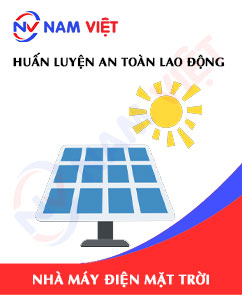
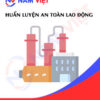
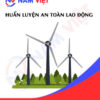







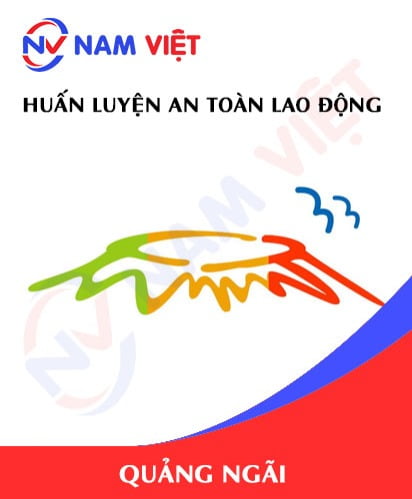


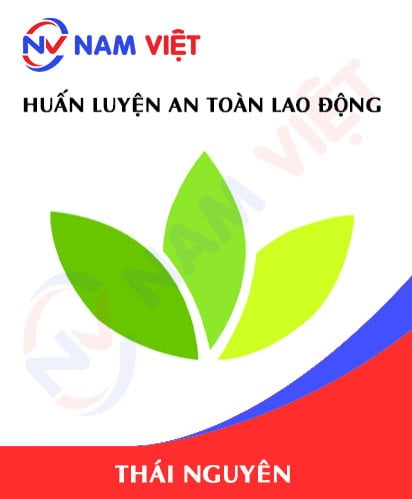
caotiensyhung.07081999
Dịch vụ huấn luyện an toàn lao động rất tốt nhé, giảng viên dạy rất sinh động dễ hiểu!